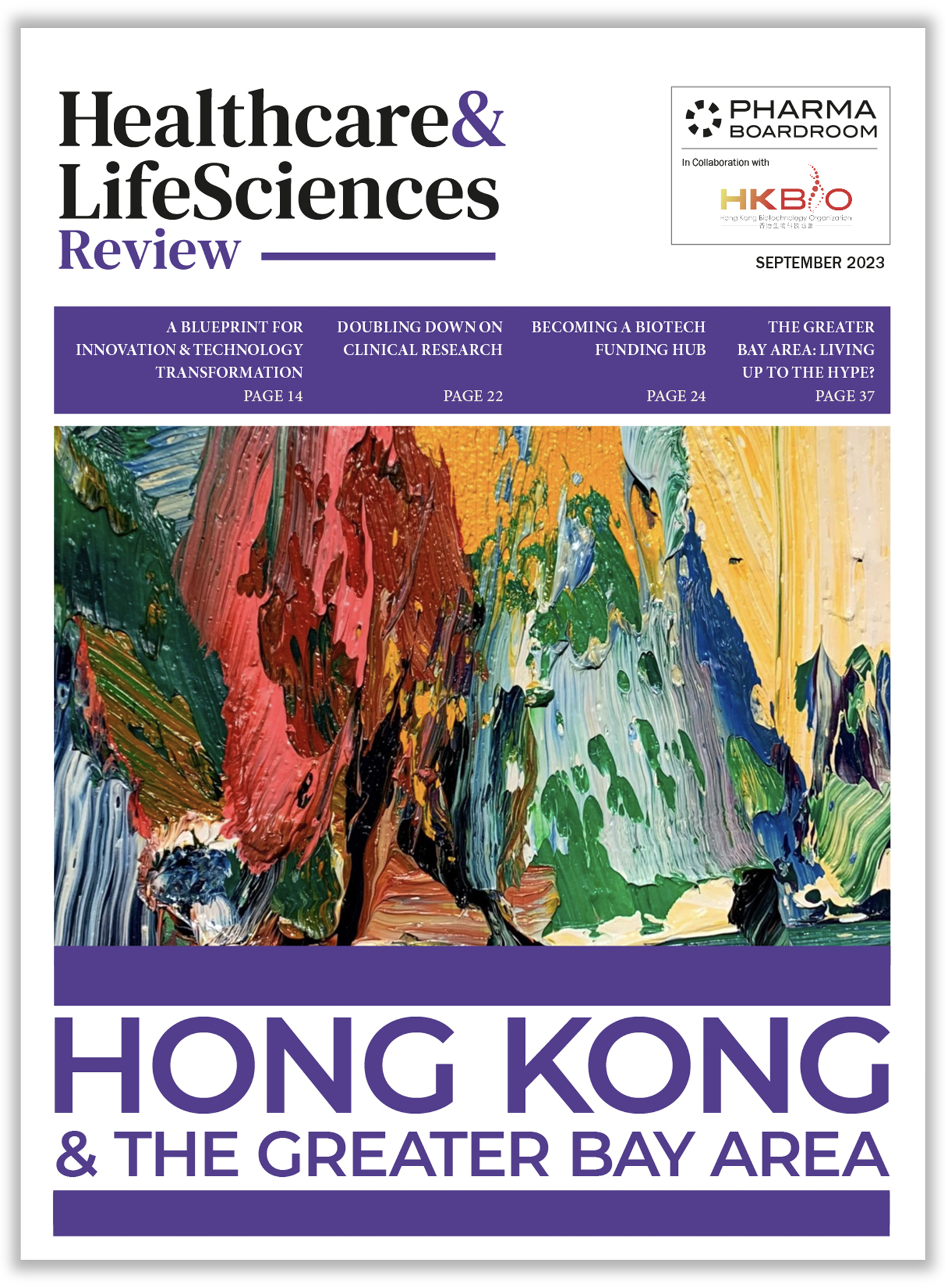HKEX-main board listed Alphamab Oncology is one of China's leading biotech success stories, having developed and marketed the world's first subcutaneously injectable PD-L1 inhibitor. Founder, Chairman, and CEO Dr Xu Ting outlines some of the key recent trends in the Chinese biotech ecosystem, the funding challenges associated with running clinical trials in China, and the vital importance of innovation and partnerships in Alphamab Oncology's growth story.
How has the innovative biotech ecosystem in China evolved since our last conversation in 2019? From your perspective, what lessons have been collectively learned by the industry?
In my opinion, the biotech ecosystem in China has undergone significant metamorphosis since our last conversation in 2019, especially with COVID-19. Before the pandemic, the biotech industry in China had been experiencing a bubble-like scenario with unrealistic valuations and euphoric venture capital activities. However, the pandemic brought attention to the importance of healthcare and innovation, leading to a further boost in the industry in China and globally. Despite this, the real challenge lies in generating returns. For instance, in the biosimilar wave, we built the infrastructure but did not generate enough return on investment, while in the immune oncology wave, we had around 20 products on the market, but most of that did not become profitable, which eventually led to lack of funding, further on the way falling off the cliff.
The third wave, which is out-licensing based on antibody drug conjugates (ADCs), has slowed down somewhat, as ADCs from China account for over half of the global deals. The complicated nature of ADCs makes it challenging to forecast the fate of any single product. Additionally, the herd effect, for ADCs could be more prominent and problematic in China, which creates huge uncertainty.
On the industry side, the pandemic has taught us the importance of healthcare and innovation, and how they are intertwined. The pandemic has also shown the public that the biotech industry can be a vital tool in addressing healthcare challenges and saving lives. Furthermore, the challenges faced by the industry in generating returns have highlighted the need for a sustainable business model. This has led to a greater focus on research and development, as well as partnerships and collaborations, which have become critical in advancing the industry.
Nevertheless, I am still feeling positive about the future of the biotech industry in China. The industry is evolving rapidly. Challenges are always accompanied by opportunities for growth and development. The key to success lies in continuing to focus on value-generating innovation, as well as partnerships and collaborations, to address healthcare challenges.
Since R&D seems crucial, how have the costs associated with running clinical trials in China evolved? And are there some demographic differences in patient cohorts that can impact the use of medicines and the value of data extracted from China?
I would say that running clinical trials in China has become increasingly expensive over the past few years – although it is still cheaper than in the US. Currently, it is around one-third or half of the US, whereas before it was just a fraction. Still, the advantage of conducting trials in China is that we have a large population of patients, particularly treatment naïve ones, which is beneficial for patient recruitment, especially in oncology. However, the drawback is that we have less mature systems to support these trials, including clinicians, centres, and GCP readiness. Therefore, it is difficult to integrate all these systems, especially when conducting global, multi-centre trials. Additionally, even though it is cheaper to conduct trials in China, there are still significant costs associated with ensuring the right procedures and systems are in place.
To my knowledge, demographic differences do not play a significant role in the evaluation, except in certain diseases like liver cancer, gastric cancer, and intestinal cancer, where there are differences in the incidence and causes of the disease between Caucasians and Asians. For instance, in Asia, liver cancer is predominantly HBV virus infection-related, whereas in the US, it is more often related to alcohol consumption. However, for most cancers, the evaluation criteria are generally the same.
That being said, there are geopolitical considerations that come into play. For example, the FDA may use ethnicity diversity codes to require the inclusion of specific demographic groups in clinical trials, such as black people, Hispanics, or Indians. This can be challenging for a Chinese biotech, as it is difficult to cover all these diverse groups. However, MNCs have a more extensive network and are better equipped and sourced to fulfil these requirements.
Currently, the most exciting developments in oncology are in agonistic, biomarker-driven approaches, which are more focused on specific genetic or molecular characteristics of tumours, rather than being organ-specific. I believe that this approach has great potential for improving cancer treatment and likely the future of oncology research.
How do you assess the current funding availability for biotechs in China? And with pricing for medicine rather low in the local market, how does this impact the chance to turn cash flow positive?
In terms of funding availability for Chinese biotech companies, the situation is challenging due to several factors. The liquidity of the Hong Kong Stock Exchange 18A is running out, and US funds have offloaded all their Chinese investments, which is a problem. Additionally, the specialty funds that drive growth are based in the US, and the majority of the liquidity is from them. Moreover, due to the COVID-19 pandemic and supply chain issues, the overall financial situation in China is not great. Furthermore, the pricing model for medicines in China is a problem. The national reimbursement system is a major player, and the bulk purchasing system is not sustainable for innovation. The lowest price for a domestic PD-1, for annual supply is barely 3,000 USD, while in US, the costs close to 200,000 USD per annual supply.
The problem is not solely the government’s pricing policy. The original intention of the bulk purchasing policy was to boost innovation by suppressing generics. Instead, like other industries, oversupply is likely the root cause, for instance, the ultra-low price for PD-1. In the past two or three years, I have been thinking about what we can do and what is next for Alphamab. For example, if we cannot beat Enhertu, what can we do to be still competitive and bring value to the patient? Reducing cost is not the solution, but safety and the potential for combination therapies might be.
Could you provide an overview of Alphamab’s current development pipeline?
Alphamab’s current development pipeline includes several products that we are excited about. Our PD-L1 product was commercialized in 2022 and is the only subcutaneous injectable PD-L1 product globally. We generated USD 130 million in revenue last year, primarily due to the product’s highly differentiated nature. We are planning to expand the product into neoadjuvant lung cancer, where the subcutaneous injection can offer even more advantages in terms of safety, compliance, and convenience, especially for patients who need to minimally impact their daily life. We are also focusing on identifying at least one unmet need in every product.
We have several bispecifics in our pipeline, including KN026, a HER2 bispecific with very positive phase II data. We are currently conducting two phase III studies in China for second-line HER2-positive gastric cancer and a larger trial for first-line breast cancer. Our Phase II data shows that the bispecific, when combined with chemo, extends progression-free survival to close to 30 months, which is significantly longer than the current best standard of care. The safety profile is also promising, and we hope that it will take a significant share of the market in China should these trials conclude positively, and also move to global development.
Another bispecific we are developing is KN046, an immuno-oncology that is bispecific with CTLA-4 and PD-L1. We have conducted more than 20 trials for this product and have seen very positive results, especially for triple-negative, gastric, liver, and lung cancers. We have two Phase III trials waiting for results, including one for first-line lung cancer and the other for pancreatic cancer.
When the second product is approved, we expect that Alphamab will break even and turn profitable in the near future.
You mentioned Antibody-drug conjugates (ADCs) as an area where development in China has been very strong….
We began developing ADCs in early 2019 and moved into this area right after our IPO. Our approach to ADCs is different. Most people treat ADCs as an extension of antibodies to make them better. However, we approach ADCs as a better chemo aiming for more tolerability. Our goal is to develop a very safe ADC that can replace first-line chemo.
Our ADC platform is based on a glycan conjugation approach, which is quite unique in the industry. The process is very simple, neat and easy to streamline.
How important are partnerships to Alphamab’s strategy, and what types of arrangements do you typically seek out?
Partnerships are crucial for Alphamab. For example, our partnership with Glenmark is aimed at maximizing the subcutaneous PD-L1 product, which requires fewer clinical resources and is more accessible to patients. Glenmark has a strong network in emerging countries, and we plan to use clinical data from China to push for global registration and generate more revenue.
In terms of bispecifics, we need confirmative proof of concept trial results to make it into the US. However, for earlier-stage technology platforms, for example ADCs and subQ ADCs, we are actively seeking partnerships, but we need to consider the current political and legal context to think of a different business model, such as joint ventures. We need to think about the target product profile from the very beginning to differentiate ourselves from the competition. We also need to consider the IP, attractiveness, and presentability of our products and plan for global partnerships accordingly. Overall, partnerships are an essential part of our strategy, and we are always exploring different types of arrangements to maximize opportunity and value for Alphamab.
Looking ahead, what are some positive developments you see for the future of Chinese biotech?
I believe that there are several positive developments for the future of Chinese biotech. The drug discovery industry is moving into a different phase, which is technology-driven and engineering-driven. This shift favours China, which is very good at engineering and assembling novel molecules with good properties. For example, China is a leader in multi-specific biologics, XDCs, CAR-Ts, RNAis and mRNA delivery, which are mainly physical and engineering problems. As I mentioned, China is also a sweet spot for ADC development, which involves assembling different parts into a novel molecule.
While engineering an NME can be an innovation in itself, it is crucial to differentiate ourselves from the competition and build a unique ecosystem. Despite the challenges I pointed out at the beginning of the interview, I am optimistic about the future of Chinese biotech and trust that the industry will continue to evolve in the age of GPT and engineering.
Finally, would you like to share a message on behalf of Chinese biotech or Alphamab?
I would like to say that drug discovery and development is a long course, and we must stick to our principles. Differentiation, meeting automatic clinical needs, and the potential to become a global product are crucial factors that we need to consider every second when we do something. While it may take time to build and develop, we must remain optimistic and committed to driving innovation in the biotech industry. By focusing on differentiation and unmet needs, we can create value for patients and society as a whole.







